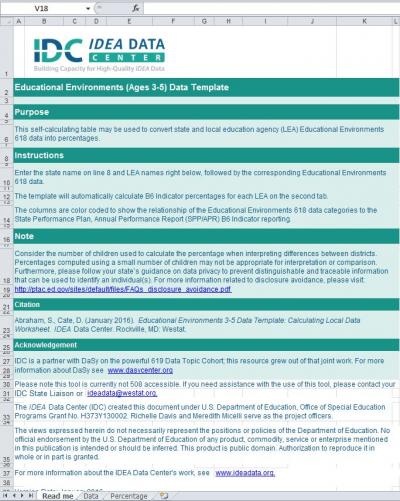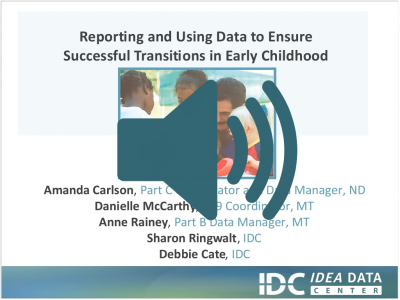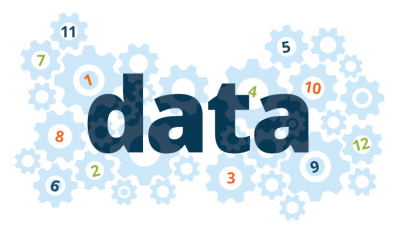Site Search
Results 1 - 6 of 6
Format: Applications and Spreadsheets
Educational Environments Ages 3-5: B6 Reporting Tools 2017-2018 Clarifications and Interactive ApplicationThe Reporting Educational Environments resource has been updated with 2017-18 clarifications. State data managers, 619 coordinators, local 619 personnel, technical assistance providers, and other interested parties can use the resource to help with reporting Educational Environments data for children ages 3-5 with disabilities as required for the OSEP Child Count and SPP/APR Indicator 6. States can use the resource's materials as “standalone” tools or as a set.
Format: Toolkits and Templates
Educational Environments 3-5 Data Template: Calculating Local Data WorksheetThis data template provides SEAs and LEAs the opportunity to see in real-time the percentages of their children ages 3-5 attending and receiving services in specific educational environments. When the LEA 618 educational environments data is simply entered on the data tab, the percentages will be calculated and displayed on the percentage tab. The use of this tool will allow SEAs to compare the percentages of children within educational environments across LEAs.
Format: Recordings
Reporting and Using Data to Ensure Successful Transitions in Early Childhood WebinarThis webinar highlighted the IDEA state reporting requirements for early childhood transitions for both Part C and Part B, found in the SPP/APR Part C Indicator 8 and Part B Indicators 11 and 12. Participants shared resources related to transition, data collection, and reporting, as well as the use of both Part C and Part B data to facilitate high quality transitions. North Dakota's Part C coordinator and data manager and Montana's 619 coordinator and data manager described how their states collect and use transition data to ensure smooth transitions for all young children as they turn three and move from early intervention services to preschool 619 services.
Format: Toolkits and Templates
Part C IDEA Data Processes ToolkitUsing the Part C IDEA Data Processes Toolkit to document data processes for all 616 and 618 data collections will establish a well-managed process for data collection, validation, and submission. In collaboration with IDC State Liaisons, states can use the toolkit to create and maintain a culture of high-quality data and establish and support consistent practices that produce valid and reliable data, while building the capacity of state staff. The toolkit contains an overview of the toolkit, Data Collection Protocols, SPP/APR Indicator Protocols, a State Landscape Protocol, a Local EI Program Determinations Protocol, a Data Collections Calendar, and additional resources that provide a structure for documenting data processes. The Data Collection Protocols are in Word, and states can tailor them meet their states' specific documentation needs.
Format: Applications and Spreadsheets
IDEA Part B Indicator 12 Transition Template: Calculating Data WorksheetThe tool converts state and LEAs early childhood transition data into percentages. Use of the tool enables states to see real-time percentages of children ages 3-5 in the transition reporting categories and compare the percentages of children within the categories across LEAs.
Format: Online Applications
The Uses and Limits of Data: Supporting Data Quality With a Strong Data ChainThis online learning module provides a general overview of how the methods and design of data collection and analysis affect interpretation of the data. The module presents the different links in the data chain (e.g., defining the question, measurement strategy) and describes how each link contributes to quality of data and data analyses. The module also includes examples from a selection of Part B and Part C SPP/APR indicators to illustrate how each step in the data chain contributes to the integrity of the data and its interpretation







